Whether it’s for work or off-road adventures if you’re running a winch, air compressors, portable fridge, lights, radios, or even adding USB outlets while your 4×4 is parked, your electrical system can only handle so much so a dual battery system is very much needed to help handle the extra power required without deading your vehicle’s battery.
If you’re not familiar with what a dual battery setup is, this quick guide will get your up to speed on what a dual battery system is.
Table of Contents
What is a Dual Battery System

Dual battery systems are secondary battery system (in addition to your normal starter battery) that is used for external power. This secondary battery is used as a power source for auxiliary gear and accessories. A dual battery system requires more than just a second battery though.
For a typical dual battery setup, you’ll want to connect your secondary battery to your starter battery, allowing you to charge both batteries from your alternator but this requires the appropriate wiring, via dual battery wiring kits.
The other requirement is a battery isolator. A battery isolator automatically disconnects your two batteries when your car is off, so you can’t accidentally use power from your starting battery and potentially run it flat.
How Does a Dual Battery System Work?
A dual battery system in a 4WD (four-wheel drive) setup is designed to provide additional power for various electrical accessories and equipment while ensuring the vehicle’s main starting battery is always capable of starting the engine. This is particularly useful for off-road enthusiasts, campers, and those who use their 4WD vehicles for extended periods without access to conventional power sources.
Here’s how a dual battery system works in a 4WD setup:
1. Main Starting Battery: This is the primary battery used to start the engine of the vehicle. Its main purpose is to provide the initial burst of power required to crank the engine and start the vehicle. The main starting battery is isolated from the rest of the electrical system and is dedicated solely to engine starting.
2. Auxiliary Battery: The auxiliary battery is an additional battery that is used to power various accessories and equipment in the vehicle, such as lights, winches, refrigerators, communication equipment, and more. It’s connected to the vehicle’s electrical system in a way that ensures it doesn’t interfere with the main starting battery’s ability to start the engine. Your auxiliary battery is most likely to be a deep-cycle Lithium battery. Using a deep-cycle battery to power your equipment provides the advantage of a consistent and reliable power supply, eliminating the risk of depleting the battery beyond its safe limits. This ensures that your battery remains intact and functional over time.
3. Isolator or Battery Management System: A key component of the dual battery system is an isolator or battery management system. This device controls the flow of electricity between the main starting battery and the auxiliary battery. The isolator ensures that the auxiliary battery can draw power when the engine is running (charging phase) and prevents it from draining power from the main starting battery when the engine is off (discharging phase). This prevents the risk of the main battery being depleted and the engine failing to start.
4. Charging Mechanism: The dual battery system needs a way to charge both the main starting battery and the auxiliary battery. The most common method is through the vehicle’s alternator. When the engine is running, the alternator generates electricity and charges both batteries. The isolator ensures that the main battery receives priority charging, and once it’s sufficiently charged, the excess power goes to charging the auxiliary battery.
5. Voltage Sensing: Many modern dual battery systems use voltage-sensing technology to determine the state of charge of both batteries. If the main battery’s voltage drops below a certain threshold (indicating it’s being depleted), the system will disconnect the auxiliary battery to prevent draining the main battery’s power.
6. Manual Switching or Automation: Some dual battery systems allow manual control over the connection between the batteries, giving the user the flexibility to isolate the auxiliary battery when needed. More advanced systems automate this process based on factors like engine running status, battery voltage levels, and user preferences.

DC-DC Dual Battery Charger
In some dual battery setups, especially those involving auxiliary batteries of different chemistries or voltage requirements, a DC-DC dual battery charger is used. This type of charger serves to regulate and optimize the charging process between the main starting battery and the auxiliary battery.
Here’s how it works:
- Voltage Regulation: A DC-DC charger operates by taking the electrical output from the vehicle’s main battery (typically through the alternator) and converting it into a controlled and regulated voltage suitable for charging the auxiliary battery. This is particularly important when the main battery voltage might be fluctuating due to engine load or other factors.
- Voltage Boosting or Reducing: In cases where the auxiliary battery’s voltage requirement is different from the main battery’s voltage, the DC-DC charger can boost or reduce the voltage as needed to ensure optimal charging. For example, if the main battery is a 12V battery and the auxiliary battery is a 24V battery, the DC-DC charger can step up the voltage accordingly.
- Charging Profile: DC-DC chargers often provide multiple charging profiles that can be tailored to different battery types, such as lead-acid, AGM, gel, or lithium. This ensures that the auxiliary battery is charged with the appropriate voltage and current to maximize its lifespan and performance.
- Isolation and Protection: DC-DC chargers also feature built-in protection mechanisms to prevent overcharging, over-discharging, and voltage spikes. This protects both the main battery and the auxiliary battery from potential damage.
- Solar Input (Optional): Some DC-DC chargers, like the RedArc BCDC1240, may have the capability to incorporate solar input. This means that they can also charge the auxiliary battery using solar panels when the vehicle is stationary, further extending the charging capabilities beyond just the alternator.
- Efficiency: DC-DC chargers are designed to be efficient in transferring power from the main battery to the auxiliary battery. They ensure that the power generated by the vehicle’s alternator is used effectively for charging both batteries.
By incorporating a DC-DC dual battery charger like the RedArc BCDC1240 into the dual battery setup, you can achieve more precise control over the charging process and optimize the performance and longevity of both the main starting battery and the auxiliary battery.
These chargers provide a valuable solution, especially when dealing with different battery chemistries, voltage requirements, and charging profiles.
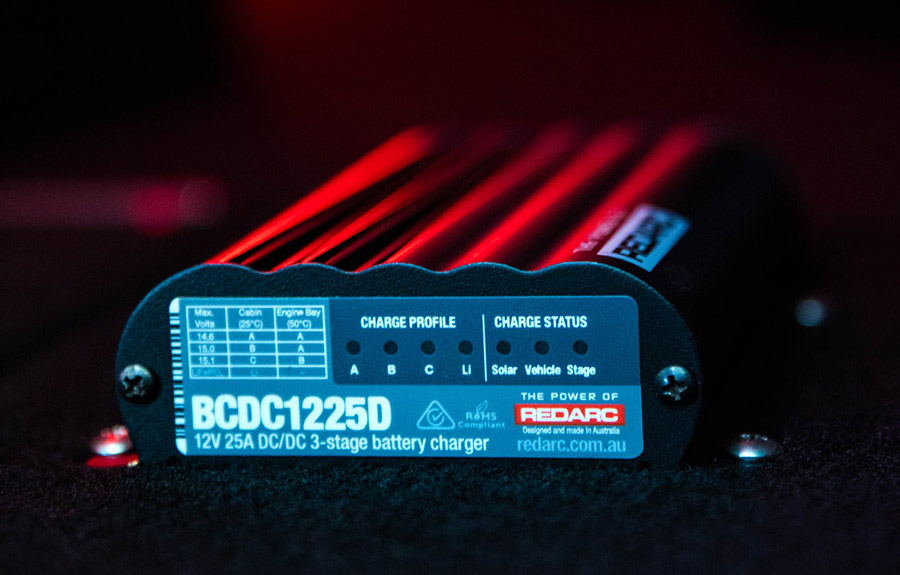
Pros & Cons of a Dual Battery System Setup
If you’re unsure if a dual battery system is right for you, consider these pros and cons.
PROS
- Allows your rig to power a fridge, radio, lights, inverters, and other accessories.
- No concern in draining your starter battery.
- Increases power available if you need to use your winch.
- Able to charge your secondary battery with solar panels.
- Peace of mind in case of primary battery failure.
CONS
- The added weight to your vehicle is due to an extra battery box.
- If you’re on a tight budget a dual battery setup can be a little expensive.
- Maintenance of your setup to make sure it’s in working order.
Different Types of Auxiliary Batteries
After assembling the remaining components of your battery kit, the next step is to select an auxiliary battery. In the realm of dual battery setups, you have a range of options for auxiliary batteries, each with its unique characteristics:
1. AGM Battery
The favored choice across various setups, AGM batteries are versatile due to their ability to charge without emitting hazardous gases. These batteries are best suited for scenarios involving partial use and recharge, rather than complete discharge and subsequent full recharge within a single usage cycle.
2. Lithium Battery
With the benefits of reduced weight and enhanced capacity, lithium batteries excel in durability, especially when employed in scenarios that involve partial utilization. It’s important to note that due to heat constraints, these batteries cannot be installed beneath the vehicle’s hood.
3. Lead Deep Cycle
Engineered to endure frequent deep discharges, deep-cycle batteries are designed to utilize a substantial portion of their capacity. These batteries are compatible for placement beneath the vehicle’s hood, in an open tray, or in a tub.
While they offer affordability, it’s worth mentioning that their lifespan can be compromised if not fully discharged and recharged during each use.

How to Keep Your Dual Battery System Running Smoothly
Like any component in your vehicle, your 4×4 dual battery system will suffer from wear and tear, especially if you’re heading off-road and facing the elements. To keep your charging system running smoothly, regular maintenance is required.
Here are some tips to help you keep your dual battery system running smoothly:
Regular Inspections:
- Periodically inspect the battery terminals, cables, and connections for signs of corrosion or damage. Clean and tighten connections as needed.
- Check for any loose or damaged wiring in the dual battery setup.
Battery Maintenance:
- Keep both the main starting battery and auxiliary battery clean and free of dirt and debris.
- For lead-acid batteries, check the fluid levels and add distilled water if necessary (if applicable).
- Follow the manufacturer’s guidelines for maintenance of the specific battery types in your setup (e.g., AGM, gel, lithium).
Charging System:
- Ensure that your vehicle’s alternator is functioning properly. If you notice issues with charging, have it checked and repaired if needed.
- If you have a DC-DC dual battery charger, periodically check its operation and settings to ensure it’s charging the auxiliary battery effectively.
Battery Isolation:
- Regularly test the isolator or battery management system to confirm that it’s working as intended. This might involve monitoring voltage levels and the charging/discharge behavior of both batteries.
Usage and Discharge:
- Avoid running accessories or equipment for prolonged periods when the engine is off, as this could deplete the main starting battery.
- If you’re using power-hungry equipment, consider the battery capacity and usage time to prevent over-discharging.
Balance Charging:
- If you have a dual battery setup with different battery chemistries or ages, consider periodically balancing the charge between the batteries. Some chargers have a feature for this purpose.
Battery Load Test:
- Perform occasional load tests on both the main starting battery and the auxiliary battery to check their health and capacity. This can help you identify if either battery is deteriorating.
Solar Panel Maintenance (if applicable):
- If your setup includes solar charging, keep solar panels clean and positioned for maximum sunlight exposure to ensure efficient charging.
Driving Habits:
- Regularly take your vehicle for longer drives to ensure the alternator has the opportunity to fully charge both batteries.
Emergency Jump Start:
- Always have the necessary equipment (such as jumper cables) on hand in case you need to jump-start the main starting battery.
Documentation:
- Keep a record of maintenance and inspections for your dual battery system. This can help you track any issues and ensure regular upkeep.
Seek Professional Help:
- If you’re unsure about any aspect of your dual battery setup’s maintenance, consult a professional mechanic or auto-electrician for guidance.
Remember that the specific maintenance requirements may vary based on the type of batteries you’re using, the components in your dual battery system, and how you’re using your 4WD.
Following these general tips can help you enjoy a reliable and efficient dual-battery system that serves your needs for years to come.
Dual Battery Installation Basics
If you’re considering installing your dual battery system yourself, have a look at our brief step-by-step guide to see if you’re up to the task.
- Mount the second battery on your rig, ensuring you have enough wire to make the necessary connections to your second battery.
- Disconnect your starter battery.
- Mount the Voltage Sensitive Relay (VSR). Place the VSR close to the main battery and away from any hot or moving parts.
- Cut cables to length.
Fit lugs to the bare ends of cable by stripping away 15mm of insulation and crimping them in place. Slide the heat shrink over the lug and apply heat to provide a waterproof seal - Use the black wire attached to the VSR to earth the relay.
- Connect the main battery to the VSR.
- Earth your second battery.
- Attach the VSR to the mounting plate. Positive cables may not be attached to both batteries.
- Attach the negative leads, first to the starter battery and then to the second battery.
- Test your system is working with a multimeter.
If you need expert assistance for installing your dual battery system, Jack Frost Auto Accessories provides both dual battery products and installation. Undecided on a dual battery system or need more information?
Our article on whether a dual battery system is right for you goes into more depth in regard to the products.
What is The Best Dual Battery System for Me?
When it comes to a dual battery setup, needs and requirements will vary from peer to peer. No one vehicle is the same nor is the person. The best dual battery system for you depends on several factors such as the intended use, vehicle type, power requirements, budget, and personal preferences.
Here are a few considerations and options you might explore:
- Usage: Determine how you intend to use the dual battery system. Are you using it for off-road adventures, camping, powering electronics, or running accessories like a refrigerator? This will help you understand your power needs.
- Vehicle Type: Different vehicles have different setups and available space for installing a dual battery system. Consider whether you have enough space for the system and whether your vehicle’s electrical system can handle the extra load.
- Battery Type: There are different types of batteries available, including lead-acid, AGM (Absorbent Glass Mat), gel, and lithium-ion batteries. Lithium-ion batteries are lightweight, have a longer lifespan, and can provide more power compared to traditional lead-acid batteries, but they are more expensive.
- Budget: Dual battery systems can range from relatively inexpensive DIY setups to more elaborate and costly professionally installed systems. Determine your budget and find a system that fits within it.
- Brand and Quality: Research different brands and models to find one with a good reputation for reliability and performance. Reading reviews and seeking recommendations from other users can be helpful in this regard.
- Features: Consider additional features such as built-in battery management systems (BMS), voltage sensing relays (VSR), solar charging capability, and monitoring systems. These features can enhance the functionality and efficiency of your dual battery setup.
- Installation: Depending on your expertise and comfort level with vehicle electronics, you may choose a system that you can install yourself or opt for professional installation.
When it comes to dual battery supply & fit, Jack Frost 4X4 OFFROAD can help pick the best dual battery system for your 4WD. Our expert technicians will also run through the best possible installation methods to get the best results. We offer dual battery setup products from RedArc, Invicta, Maximus, Baintech, and Projecta.
This includes the following:
- DC-DC Chargers
- Battery Isolators
- Anderson Plugs
- Lithium Deep Cycle Batteries
- AGM Batteries
- Solar Panels
- Switch Panels
- Management Systems
Along with the full installation of your Dual Battery Setup.
We will provide you with 4 potential setup options dependent on your specific needs and requirements, which include:
- Under Bonnet
- Behind the Seat
- Tray/Canopy
- Portable
You can read our article 3 Best Locations for a Dual Battery Setup to get a better idea of what’s best for you.
Need Dual Battery Installation Service?
If you’re living in Brisbane and looking for an all-in-one workshop that provides both top-quality products and installation services when it comes to a dual battery setup, Jack Frost 4X4 is your go-to provider. We have a workshops located at Mt Gravatt East and Geebung.
To request a quote for all dual battery needs, simply fill out the “Quote Form” on here.

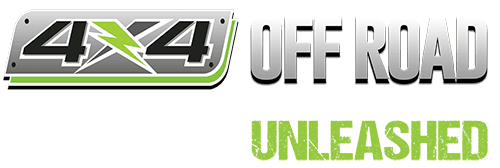
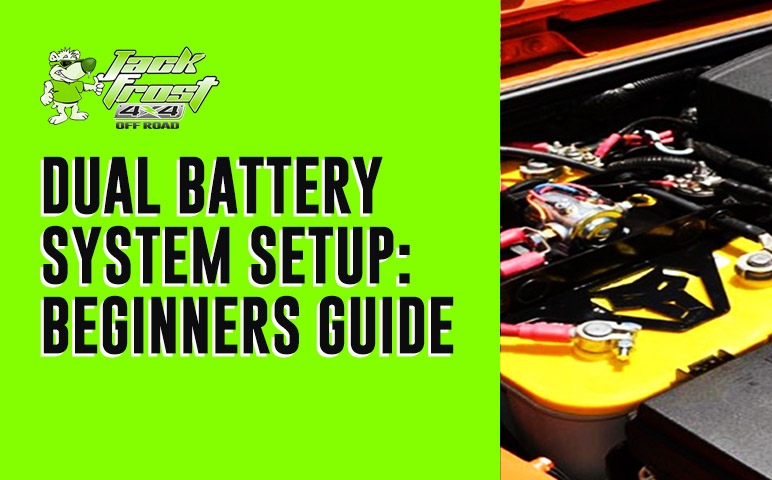

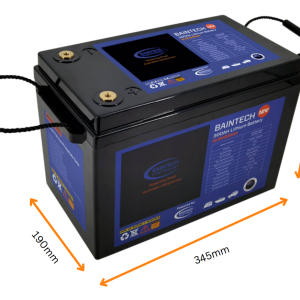


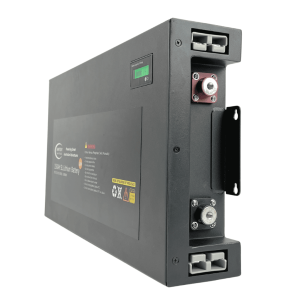
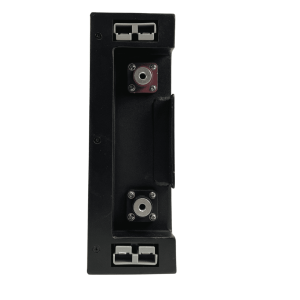
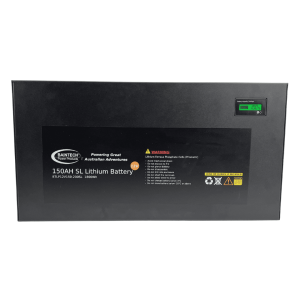
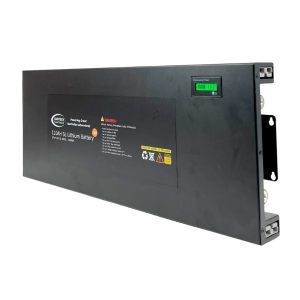

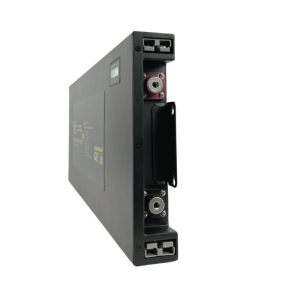
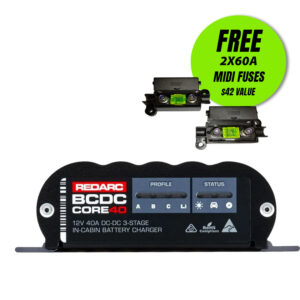
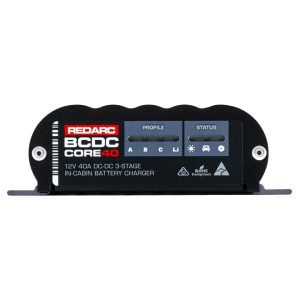
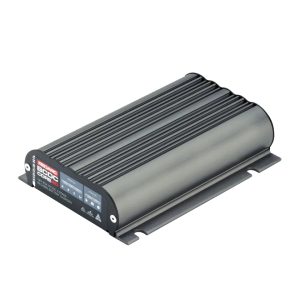
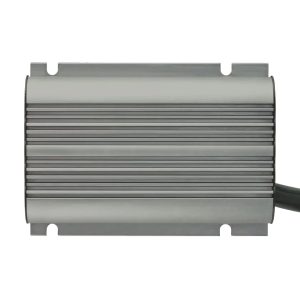
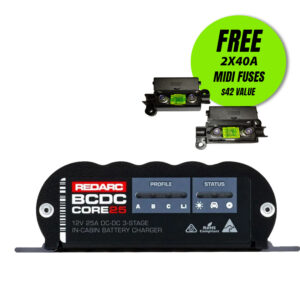

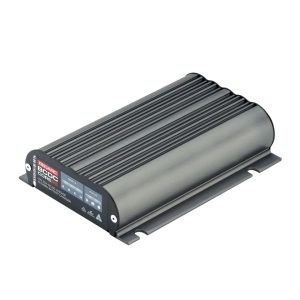

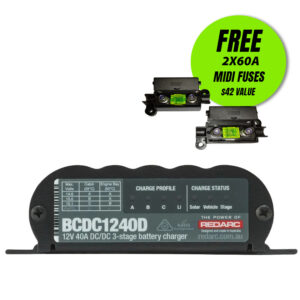
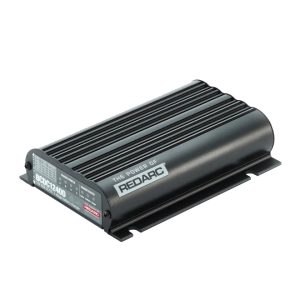
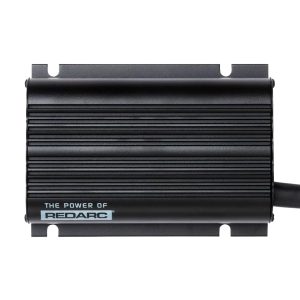

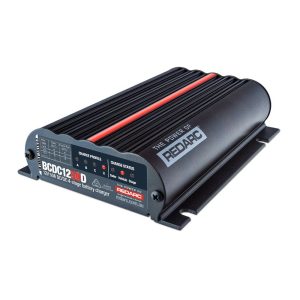
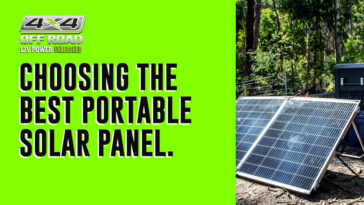


 No products in the cart.
No products in the cart.